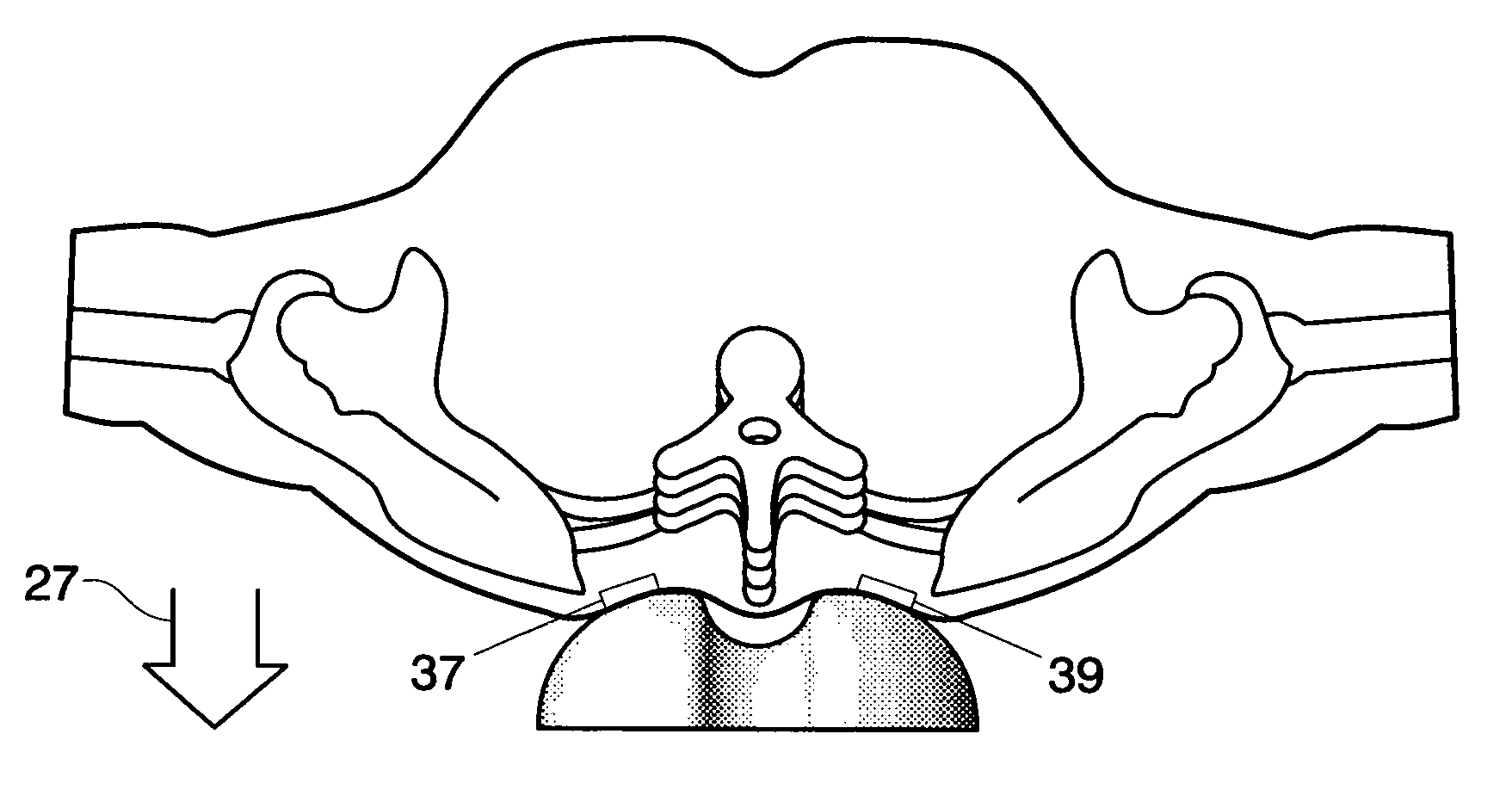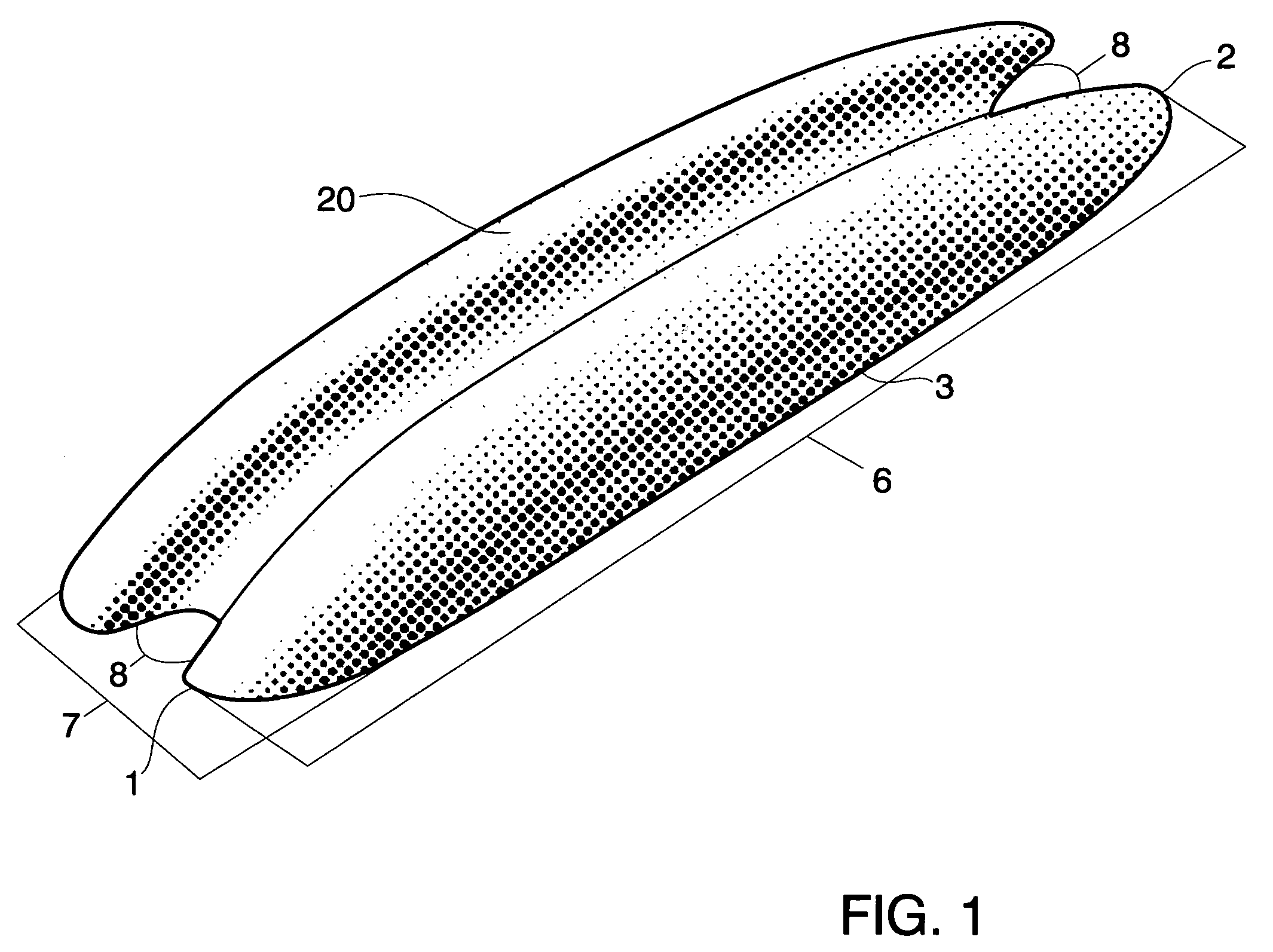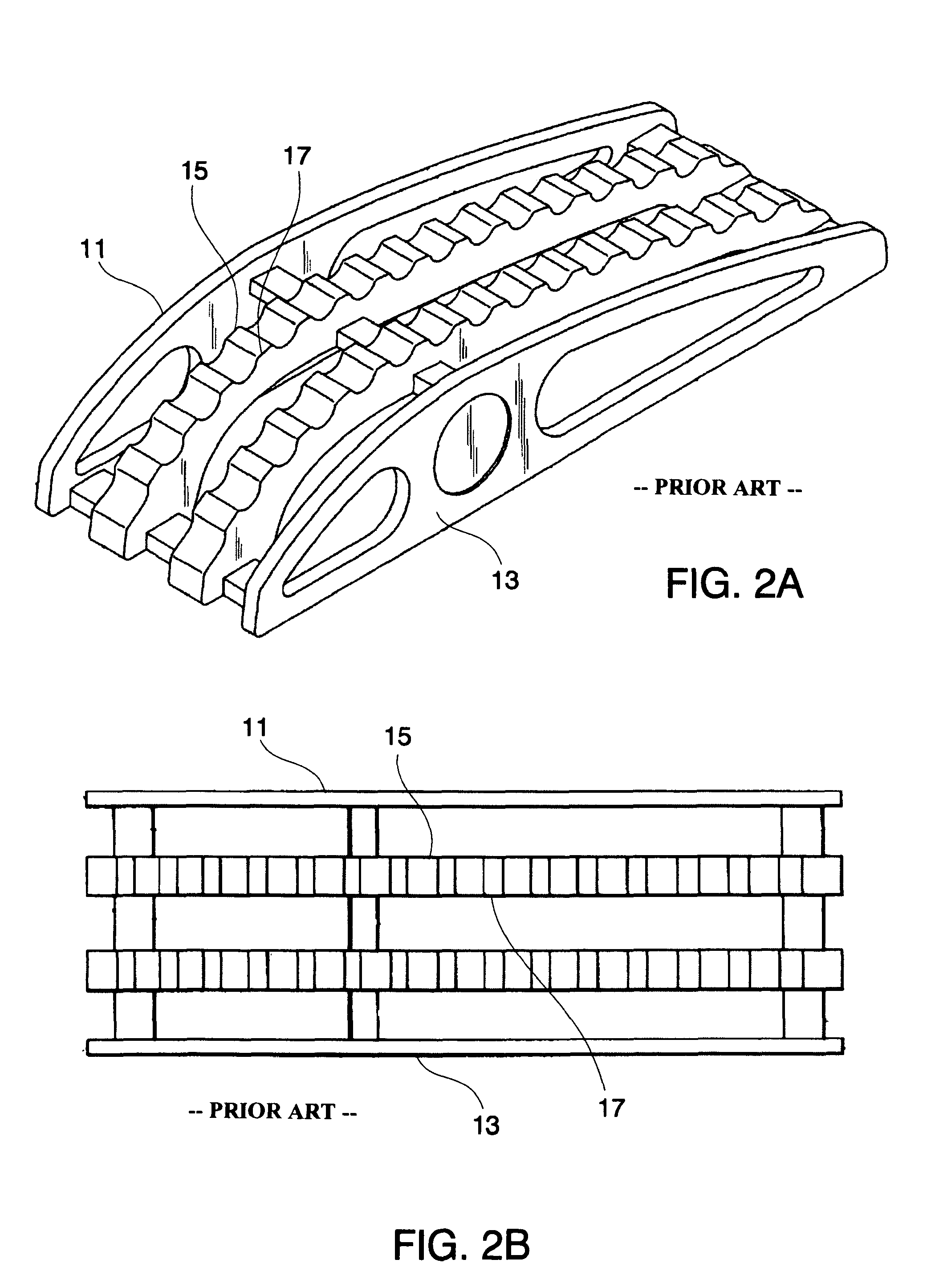Asymmetrical and complexly-curved, passive, device for relieving back and spinal postural mechanical pain
a passive, asymmetrical and complex technology, applied in the direction of contraceptive devices, vibration massage, socks, etc., can solve the problems of patients with residual problems, pain sensation, and most people's inability to stop their daily activities
- Summary
- Abstract
- Description
- Claims
- Application Information
AI Technical Summary
Benefits of technology
Problems solved by technology
Method used
Image
Examples
Embodiment Construction
Description of the Drawings
[0024]FIG. 1 is a drawing from the top, right perspective of the preferred embodiment of the invention, showing its top surface [20], first end [1] and second end [2] parallel to each other; left side [3], perpendicular to and level with the first end [1] and second end [2]; not visible from this perspective is the right side [4], which is parallel to the left side [3] and also perpendicular to and level with the first end [1] and second end [2]). The device has a long axis [6] between the first end [1] and second end [2], a wide axis [7] between the left side [3] and right side [4], and a central, concave groove [8] running parallel with and centered in the long axis [6] from the first end [1] to the second end [2], and extending not less than one-fifth and not more than one-third of the distance of the wide axis [7]. This view is stippled to show some details of the top surface's convex asymmetric longitudinal curvature along the long axis and complex, s...
PUM
 Login to View More
Login to View More Abstract
Description
Claims
Application Information
 Login to View More
Login to View More - R&D
- Intellectual Property
- Life Sciences
- Materials
- Tech Scout
- Unparalleled Data Quality
- Higher Quality Content
- 60% Fewer Hallucinations
Browse by: Latest US Patents, China's latest patents, Technical Efficacy Thesaurus, Application Domain, Technology Topic, Popular Technical Reports.
© 2025 PatSnap. All rights reserved.Legal|Privacy policy|Modern Slavery Act Transparency Statement|Sitemap|About US| Contact US: help@patsnap.com



